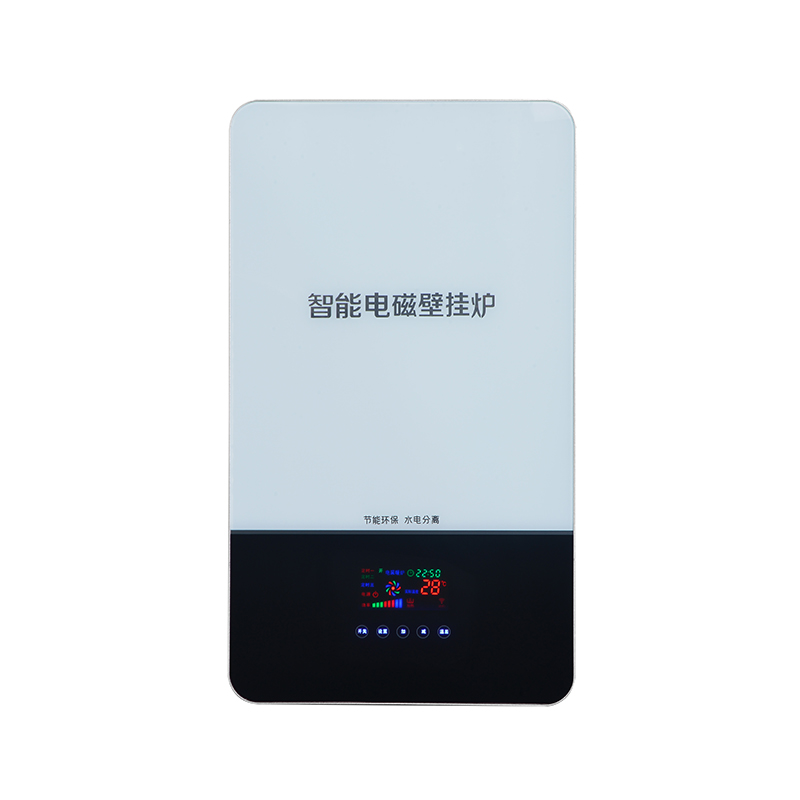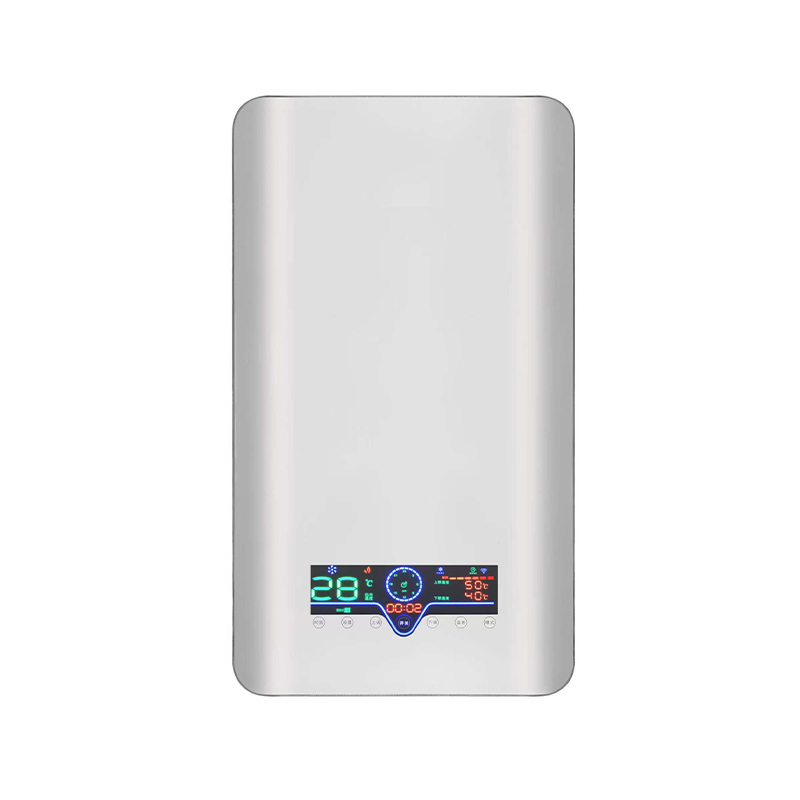Is the surface temperature distribution of a flat-plate electromagnetic heating furnace uniform, avoiding localized overheating or blind spots?
Release Time : 2025-10-11
In modern industry, scientific research, and high-end manufacturing, heating processes are no longer satisfied with simply "raising temperature"; instead, they pursue precise, uniform, and controllable temperature. As an efficient and clean heat source, flat-plate electromagnetic heating furnaces are gradually replacing traditional resistance wire, gas, or oil bath heating methods. They are widely used in temperature-sensitive processes such as material heat treatment, laboratory sample heating, electronic component packaging, and mold preheating. In these applications, consistent temperature distribution across the heated surface and the ability to avoid localized overheating or blind spots are key indicators of their technical level and practical value. Temperature uniformity not only directly impacts product quality but also process repeatability and the long-term stability of the equipment.
The operating principle of a flat-plate electromagnetic heating furnace determines its unique advantages in temperature distribution. Unlike traditional heating methods, which transfer heat from the bottom or periphery to the center through conduction, electromagnetic heating uses an alternating magnetic field to directly excite eddy currents within the metal material, achieving rapid heating of the material itself. When heating a magnetic metal plate or container, the entire contact surface generates heat almost synchronously under the influence of the magnetic field, fundamentally reducing temperature differences caused by differential heat conduction paths. This "body heating" mode avoids the "overheating at the edges and lagging at the center" phenomenon common in traditional heating, resulting in a more balanced temperature field.
However, achieving truly uniform temperature requires more than just the heating principle; meticulous optimization of the structural design and control system is also necessary. High-quality flat-plate electromagnetic heating furnaces typically utilize a multi-turn coil layout or zoned excitation technology to achieve a more uniform magnetic field distribution within the heating area. The coil winding density, shape, and position are meticulously calculated to ensure that the magnetic field energy covers the entire heating surface, avoiding hot or cold spots caused by magnetic field concentration or attenuation. Furthermore, the heating panel itself is constructed of materials with high thermal conductivity and low thermal resistance, such as special ceramics or composite metal plates, which rapidly conduct localized heat laterally, further bridging small temperature differences and creating a stable and consistent thermal environment.
An intelligent temperature control system is also crucial. Modern electromagnetic heating furnaces are equipped with high-precision temperature sensors that monitor surface temperatures at multiple locations in real time. Using feedback, they adjust output power to dynamically balance heat output across different areas. Some high-end equipment also supports multi-stage programmable temperature control. Users can set heating curves and holding intervals based on process requirements. The system automatically adjusts magnetic field strength to ensure the ideal temperature throughout the heating process. This closed-loop control mechanism effectively minimizes the impact of environmental fluctuations or load variations on temperature uniformity, improving process stability and repeatability.
In practical applications, consistent temperature distribution directly determines product quality. For example, during material annealing or curing, localized overheating can cause discoloration, deformation, or performance degradation. In laboratory sample heating, uneven temperatures can affect reaction rates and the accuracy of experimental results. Flat-plate electromagnetic heating furnaces provide a uniform thermal field, ensuring that every sample and workpiece experiences the same thermal history, thereby improving batch consistency and reducing scrap.
Furthermore, uniform heating extends the life of both the equipment and the heated object. Avoiding localized high temperatures reduces thermal fatigue and oxidation in the material and prevents cracking of the heating panel due to thermal stress. This stability is particularly important for processes requiring frequent temperature changes.
In summary, the flat-plate electromagnetic heating furnace, through the synergy of advanced electromagnetic design, high-quality materials, and an intelligent control system, achieves highly consistent surface temperature distribution, effectively preventing localized overheating or heating blind spots. It is not only a provider of thermal energy but also a guardian of precision processes. Choosing equipment with this characteristic ensures precision and reliability in every heating operation, ensuring that temperature truly serves quality and efficiency.
The operating principle of a flat-plate electromagnetic heating furnace determines its unique advantages in temperature distribution. Unlike traditional heating methods, which transfer heat from the bottom or periphery to the center through conduction, electromagnetic heating uses an alternating magnetic field to directly excite eddy currents within the metal material, achieving rapid heating of the material itself. When heating a magnetic metal plate or container, the entire contact surface generates heat almost synchronously under the influence of the magnetic field, fundamentally reducing temperature differences caused by differential heat conduction paths. This "body heating" mode avoids the "overheating at the edges and lagging at the center" phenomenon common in traditional heating, resulting in a more balanced temperature field.
However, achieving truly uniform temperature requires more than just the heating principle; meticulous optimization of the structural design and control system is also necessary. High-quality flat-plate electromagnetic heating furnaces typically utilize a multi-turn coil layout or zoned excitation technology to achieve a more uniform magnetic field distribution within the heating area. The coil winding density, shape, and position are meticulously calculated to ensure that the magnetic field energy covers the entire heating surface, avoiding hot or cold spots caused by magnetic field concentration or attenuation. Furthermore, the heating panel itself is constructed of materials with high thermal conductivity and low thermal resistance, such as special ceramics or composite metal plates, which rapidly conduct localized heat laterally, further bridging small temperature differences and creating a stable and consistent thermal environment.
An intelligent temperature control system is also crucial. Modern electromagnetic heating furnaces are equipped with high-precision temperature sensors that monitor surface temperatures at multiple locations in real time. Using feedback, they adjust output power to dynamically balance heat output across different areas. Some high-end equipment also supports multi-stage programmable temperature control. Users can set heating curves and holding intervals based on process requirements. The system automatically adjusts magnetic field strength to ensure the ideal temperature throughout the heating process. This closed-loop control mechanism effectively minimizes the impact of environmental fluctuations or load variations on temperature uniformity, improving process stability and repeatability.
In practical applications, consistent temperature distribution directly determines product quality. For example, during material annealing or curing, localized overheating can cause discoloration, deformation, or performance degradation. In laboratory sample heating, uneven temperatures can affect reaction rates and the accuracy of experimental results. Flat-plate electromagnetic heating furnaces provide a uniform thermal field, ensuring that every sample and workpiece experiences the same thermal history, thereby improving batch consistency and reducing scrap.
Furthermore, uniform heating extends the life of both the equipment and the heated object. Avoiding localized high temperatures reduces thermal fatigue and oxidation in the material and prevents cracking of the heating panel due to thermal stress. This stability is particularly important for processes requiring frequent temperature changes.
In summary, the flat-plate electromagnetic heating furnace, through the synergy of advanced electromagnetic design, high-quality materials, and an intelligent control system, achieves highly consistent surface temperature distribution, effectively preventing localized overheating or heating blind spots. It is not only a provider of thermal energy but also a guardian of precision processes. Choosing equipment with this characteristic ensures precision and reliability in every heating operation, ensuring that temperature truly serves quality and efficiency.





